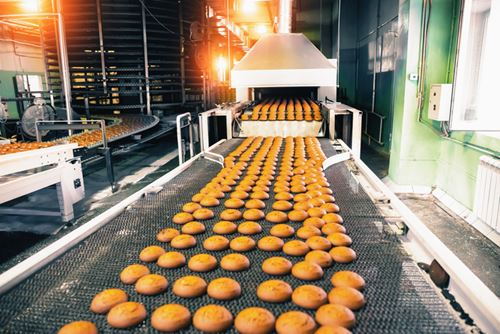
Food Safety and Motors? The Importance of BISSC Certification
With our world’s population steadily growing, there has been a squeeze on our agricultural and animal production sectors. This increase and intense demand for food production opens risk to underprepared food manufacturers for food safety. Trying to keep up with demand while keeping costs down can lead to inappropriate sanitization and inspection of equipment and end up costing more.
So how can these risks be combatted? The first thought when most think of food safety and sanitation is physical food preparation, such as in a restaurant or at home, and then storage - but food safety starts before the product ever hits a grocery store shelf. Contamination can happen at any point in the food production chain – from production at the farm to final preparation. Focus on the machinery used to manufacture edible goods is often overlooked. These machines can range from industrial ovens to industrial grinders and anything in between. They all need to have the capability to be sanitized properly to prevent cross-contamination and bacterial growth.
In 1949, the need for standards to ensure machinery used in food manufacturing is safe, was brought into the spotlight and the BISSC, or Baking Industry Sanitation Standards Committee, was formed. When this committee was formed, they worked alongside the American Society of Baking Z50 Committee to develop the regulations (more formally known as the ANSI/ASB/Z50.2-2013 Sanitation Standard for the Design of Bakery Equipment). There was no certification process for equipment with these standards until 1966, when the BISSC Office of Certification was established to promote greater recognition and use of equipment bearing the BISSC verified symbol.
Do not be fooled – while the BISSC specifically states “Baking Industry” in the name, the standards hold true to many industries – including meat packing, sugar refining, or even pharmaceutical manufacturing. While these standards are voluntary, the certification for equipment is widely sought by food processor companies for high quality processing lines. These standards define the sanitation requirements for how the machinery operates and OEM manufacturers must adhere to these regulations in order to bear the BISSC certified label on their product.

- Ensuring cooling fans of totally enclosed fan-cooled motors and accessory equipment are covered and securely fastened – but removable for cleaning
- Conduit box is sealed or integrated into the frame
- Any mounting feet cannot have crevices (any filler material that is non-toxic and permanent can be used to eliminate these areas)
- Breather assemblies must be removable and accessible to prevent any foreign particles.
While not a requirement from BISSC, an important note to pay attention to when selecting motors for consumable applications is the coating. It is important to ensure any coating used is USDA-approved and non-toxic (or even better – paint-free stainless steel.) This is an aspect of design that needs to be considered when developing motors for these applications – and is a principal part of our washdown motor testing process.
“Everyone has a role to play in keeping food safe”, from start to finish. Therefore, BISSC certification and regulations are extremely important in helping to reduce risk and keep us all a little safer.

